#pithecophaga
Note
If you take requests, could you share some facts about the Philippine Eagle?
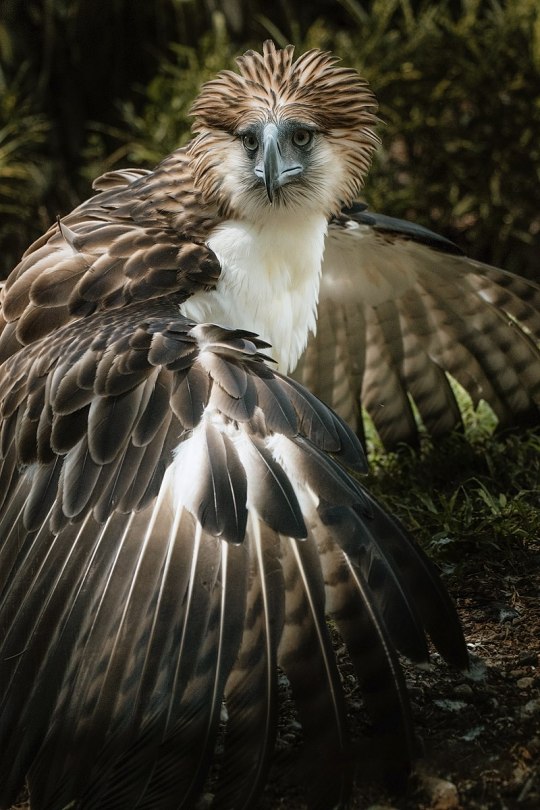


Philippine Eagle aka Monkey-eating Eagle (Pithecophaga jefferyi), family Accipitridae, order Accipitriformes, endemic to the forests of the Philppines
CRITICALLY ENDANGERED.
While not the largest eagle in terms of weight, they are considered the largest eagle in the world in terms of length and wing surface area.
They are endangered due to loss of habitat (deforestation).
Once considered to be closely related to the Harpy Eagle, DNA analysis concludes that they are actually much more closely related to the Snake Eagles (like the Bataleur).
Despite the nickname, they feed on a wide variety of mid sized animals, like monitor lizards, flying lemurs, small deer, etc, as well as monkeys.
photographs: Shemlongakit, HCruz985, Rich Lindie
516 notes
·
View notes
Text

Close-up of Philippine eagle's (Pithecophaga jefferyi) head in profile, Philippine Eagle Centre, Malagos, Davao, Mindanao, Philippines. First Philippine eagle bred through artificial insemination. Critically endangered. Captive.
Photographer: Klaus Nigge
#klaus nigge#photographer#philippine eagle#eagle#bird photography#pithecophaga jefferyi#philippine eagle centre#malagos#davao#mindanao#philippines#nature
27 notes
·
View notes
Text

Philippine Eagle (pithecophaga jefferyi)
Critically Endangered
endemic to Philippines
threats: deforestation, pollution, pesticides, poaching
#these guys have style#and a 7 ft wingspan wow#also called the monkey-eating eagle badass af#bird art#endangered species#conservation#philippine eagle#Pithecophaga jefferyi#philippines#eagle#animal art#bird#bird of prey#asia
179 notes
·
View notes
Text
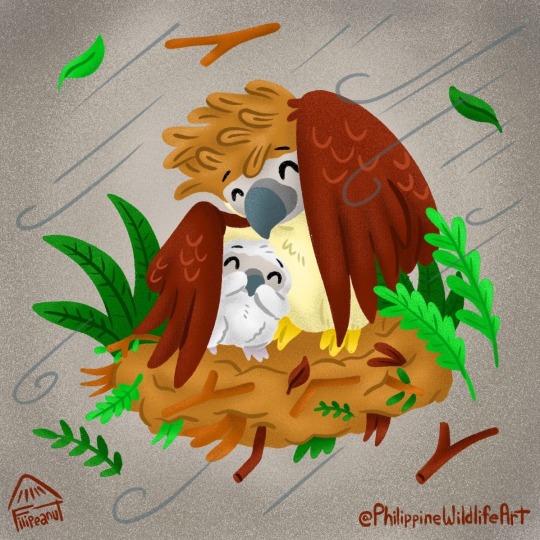
Did you know that Philippine Eagle nests in Luzon have so far been smaller than those in Mindanao? They are also hidden under more plants and foliage too. Scientists suspect that these are adaptations to typhoons.
In 2015, Tatiana Abaño and her team searched far and wide for nests in the Cordillera, and became the first to record an active nest in Luzon! Since there are more typhoons that make landfall in Luzon, they suspect the smaller nest sizes and increased plant cover help protect the chicks from these storms (Abaño, et al., 2016, AMS Desquitado, et al., 2020).
But as storms become larger, and more forest is lost in Luzon, Mindanao, Samar, and Leyte, all nests are threatened unless we do something about it. Until something is done, stay dry and safe this Philippine Eagle Week, and beyond.
https://philippinewildlife.art/portfolio/philippine-eagle/
Further reading:
TRC Abaño, et al., 2016. First nesting record of Philippine Eagle Pithecophaga jefferyi from Luzon, Philippines, with notes on diet and breeding biology
AMS Desquitado, et al., 2020. A climatological study of typhoons over the Philippine Area of Responsibility from 1989–2018.
17 notes
·
View notes
Photo
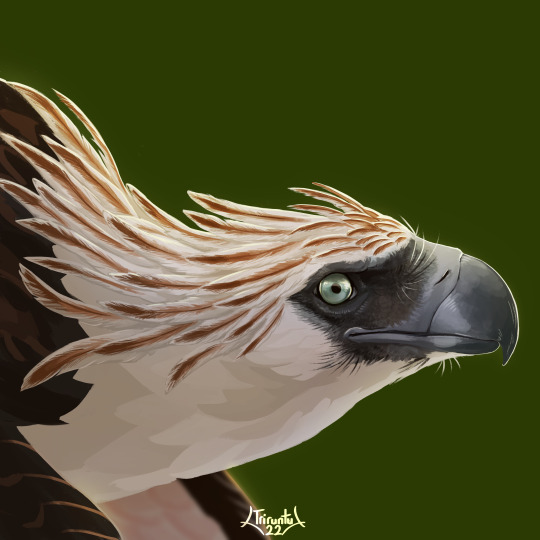
#470, a philippine eagle for @sinovenatorinae.
Requests for birds are open, updates happen on Thursdays.
[project tag] | [kofi]
[commissions]
Find me on: [twitter]
74 notes
·
View notes
Photo

A new variant has been added!
Philippine Eagle (Pithecophaga jefferyi)
© Valeria Pellicer
It hatches from black, brown, dark, huge, much, national, other, pale, powerful, rare, shaggy, thick, unmistakable, white, and yellow eggs.
squawkoverflow - the ultimate bird collecting game
🥚 hatch ❤️ collect 🤝 connect
2 notes
·
View notes
Text
ÁGUILA COMEMONOS DE LAS FILIPINAS
PITHECOPHAGA JEFFERYI
PITHECOPHAGA JEFFERYI
LONGITUD: 86 A 100 CENTÍMETROS.
PESO: 4,5 A 8 KILOS.
PLUMAJE: SIMILAR PARA AMBOS SEXOS.
MIGRACIÓN: NO MIGRATORIA.
ESTADO: CRÍTICAMENTE AMENAZADA.
UBICACIÓN: FILIPINAS.
ESTA ÁGUILA GIGANTE ES UNA DE LAS AVES DE PRESA MÁS ESCASAS DEL MUNDO, AMENAZADA POR LA TALA DE BOSQUES Y LA CAZA. SE ALIMENTA DE UNA AMPLIA VARIEDAD DE ANIMALES, INCLUIDOS MONOS, A LOS…
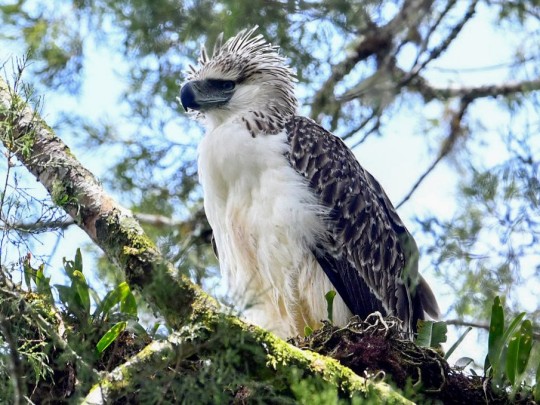
View On WordPress
0 notes
Text

The Philippine eagle (Pithecophaga jefferyi), also known as the monkey-eating eagle or great Philippine eagle, is a critically endangered species of eagle of the family Accipitridae which is endemic to forests in the Philippines. It has brown and white-colored plumage, a shaggy crest, and generally measures 86 to 102 cm (2.82 to 3.35 ft) in length and weighs 4.04 to 8.0 kg (8.9 to 17.6 lb).
The Philippine eagle is considered the largest of the extant eagles in the world in terms of length and wing surface, with only Steller's sea eagle and the harpy eagle being larger in terms of weight and bulk. It has been declared the national bird of the Philippines. The most significant threat to the species is loss of habitat, a result of high levels of deforestation throughout most of its range. Killing a Philippine eagle is punishable under Philippine law by up to 12 years in prison and heavy fines.
Photo 📸 @lohwana_halaq
Philippine Eagle Center
https://instagram.com/lohwana_halaq
139 notes
·
View notes
Text
Dynatoaetus gaffae Mather et al., 2023 (new genus and species)

(Foot bones of Dynatoaetus gaffae [scale bars = 10 mm], from Mather et al., 2023)
Meaning of name: Dynatoaetus = mighty eagle [in Greek]; gaffae = for Priscilla Gaff [program coordinator at the Melbourne Museum who studied Australian raptor fossils for her Master’s thesis]
Age: Pliocene?–Pleistocene (more precise age uncertain, but at least Chibanian)
Where found: Mairs Cave, Kutjitara Formation, and Victoria Fossil Cave, South Australia, Australia and Wellington Caves, New South Wales, Australia
How much is known: Partial skeleton of one individual, including a partial skull, some vertebrae, and various limb bones. Several isolated hindlimb bones have also been found.
Notes: Dynatoaetus was an accipitrid, or a “hawk” in the broad sense. It is the most completely known Pleistocene accipitrid from Australia and also one of the largest accipitrids ever found. Among predatory accipitrids, only the recently extinct Haast’s eagle (Hieraaetus moorei) of New Zealand and the Pleistocene Gigantohierax suarezi of Cuba were demonstrably larger.
The closest living relatives of Dynatoaetus appear to be the aegypiine vultures, a group that includes the cinereous (Aegypius monachus) and griffon vultures (Gyps fulvus). However, the robust proportions of its toe bones indicate that Dynatoaetus retained the typical accipitrid ability to hunt regularly and was not primarily a scavenger, unlike extant aegypiines. Its next closest living relatives are the circaetine eagles, which include a large predatory modern species, the Philippine eagle (Pithecophaga jefferyi). Considering how big Dynatoaetus was, it would have probably been able to prey on the young of the giant marsupials and flightless birds that it lived alongside. Like many modern eagles, however, it could have also scavenged opportunistically, and its size may have helped it intimidate other animals trying to feed from the same carcasses.
Along with the also recently-named Cryptogyps (an aegypiine that most likely had a more typical vulturine lifestyle), Dynatoaetus indicates that accipitrids once occupied a greater diversity of ecological niches in Australia than they do today. Whether predators or scavengers, large raptors like Dynatoaetus and Cryptogyps probably depended on megafauna as their main food source, so it is likely that they died out in the wake of the severe megafaunal extinctions that occurred in Australia during the Pleistocene.
Reference: Mather, E.K., M.S.Y. Lee, A.B. Camens, and T.H. Worthy. 2023. A giant raptor (Aves: Accipitridae) from the Pleistocene of southern Australia. Journal of Ornithology advance online publication. doi: 10.1007/s10336-023-02055-x
32 notes
·
View notes
Text
Animal of the Day!
Philippine Eagle (Pithecophaga jefferyi)
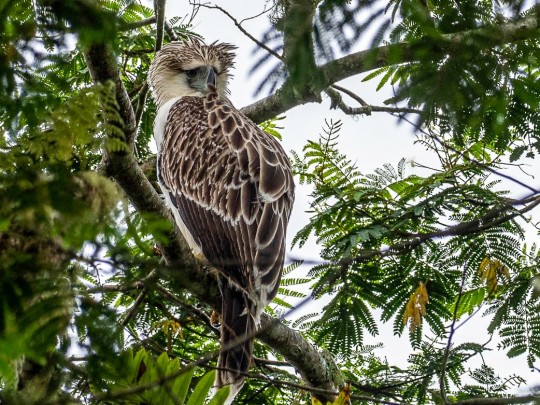
(Photo by Forest Jarvis)
Conservation Status- Critically Endangered
Habitat- Philippines
Size (Weight/Length)- 90 cm; 2 m wingspan
Diet- Monkeys; Mammals; Snakes; Birds
Cool Facts- The Philippine eagle is the world’s largest species of eagle. Being the top predator of the Philippine islands, this eagle dominates. They are some of the longest living eagles, capable of living to sixty years in the wild. The Philippine eagle will eat almost any animal, favoring monkeys. As these eagles mate for life, pairs will often hunt animals together, using one to distract the prey and the other to kill it. Despite being Philippines' national bird, due to habitat loss, the Philippine eagle is one of the rarest birds of prey in the world. Mass breeding programs across the world are working together to breed and release eagles back into the wild.
Rating- 12/10 (Certified monkey killers.)
#Animal of the day#Animals#Birds#Bird of prey#Eagle#Sunday#June 19#Philippine Eagle#biology#science#conservation#the more you know
143 notes
·
View notes
Note
Love your blog a lot! Supporting you all the way from the Philippines! <3
Thank you cupcake! Here is the national bird of the Philippines!
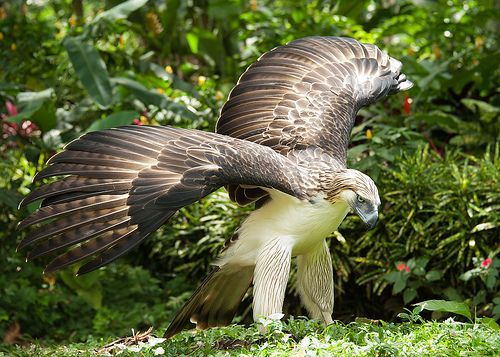
Philippine Eagle aka Monkey-eating Eagle (Pithecophaga jefferyi), family Accipitridae, order Accipitriformes, endemic to the forests of the Philppines
CRITICALLY ENDANGERED.
While not the largest eagle in terms of weight, they are considered the largest eagle in the world in terms of length and wing surface area.
They are endangered due to loss of habitat (deforestation).
Once considered to be closely related to the Harpy Eagle, DNA analysis concludes that they are actually much more closely related to the Snake Eagles (like the Bataleur).
Despite the nickname, they feed on a wide variety of mid sized animals, like monitor lizards, flying lemurs, small deer, etc, as well as monkeys.
photograph by imkidd

photograph by Casper Simon
438 notes
·
View notes
Note
whats your top 5 best birds
Oh wow, this is tough.
Hard to narrow it down to just five birds, but here we go...
(Under cut due to the length of this post. Images are included.)
In no particular order:
Great Philippine eagle (Pithecophaga jefferyi)

Indonesian peafowl (Pavo muticus)

Golden pheasant (Chrysolophus pictus)

Red-crowned crane (Grus japonensis)
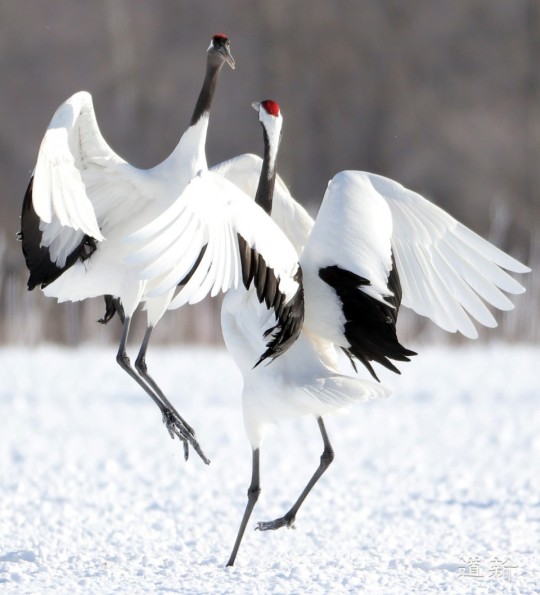
Lammergeier (Gypaetus barbatus)

#tori talks#Honorable mention goes to the emu#What a cute and funky modern-day dinosaur we've got...
13 notes
·
View notes
Text
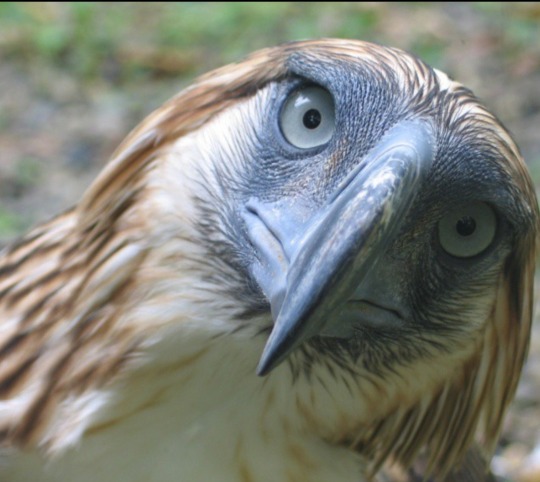
Philippine Eagle
Pithecophaga jefferyi
This baby is named Pangarap (Dream). Fluffy yet fierce, in fact, one of the fiercest.
Missed working with these eagles, especially raising cute fluffballs! 😍
#philippine eagle#photography#attempt at photography#critically endangered#missed my baby eagles#cute animals#animals#cute but deadly
2 notes
·
View notes
Text
Hello Haribon hatchling! She knows Philippine Eagle Week is coming this June 4 to 10! Did you know that nests of Philippine Eagles can be as big as a king sized bed, up to 2 meters in diameter*? June is also Philippine Environment Month!
*2 meter nest size from Tatiana Abaño et al., 2016 of the Philippine Eagle Foundation.
13 notes
·
View notes
Text
just learned about an animal whose scientific name is actually more memorable than its common name
it's the philippine eagle

like okay a week from now I'll just remember that it's some kind of eagle
scientific name: Pithecophaga jefferyi
oh. monkey eater. of jeffrey
4 notes
·
View notes
Photo

🔥The Philippine eagle (Pithecophaga jefferyi), also known as the monkey-eating eagle or great Philippine eagle, is a critically endangered species of eagle of the family Accipitridae which is endemic to forests in the Philippines.
1 note
·
View note